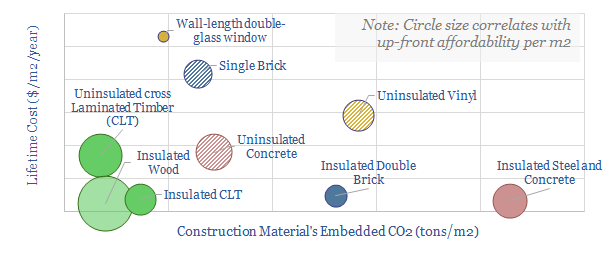The construction industry accounts for 10% of global CO2, mainly due to cement and steel. But mass timber could become a dominant new material for the 21st century, lowering emissions 15-80% at no incremental costs. Debatably mass timber is carbon negative if combined with sustainable forestry. This could disrupt global construction. This 17-page note outlines the opportunity and who benefits.
CO2 emissions of the construction industry are disaggregated on pages 2-3. Some options have been proposed to lower CO2 intensity, but most are costly.
Sustainable forestry also needs an outlet, as argued on pages 4-7. Younger forests grow more quickly, whereas mature forests re-release more CO2 back into the atmosphere.
The case for cross-laminated timber (CLT) is outlined on pages 9-11, describing the material, how it is made, its benefits, its drawbacks, and its CO2 credentials.
CLT removes CO2 at no incremental cost, illustrated with specific case studies and cost-breakdowns on pages 12-13.
CLT economics are attractive. We estimate 20% IRRs are achievable for new CLT production facilities on page 14.
Leading companies are described on pages 15-16, including large listed companies, through to private-equity backed firms and growth stage firms.
Our conclusion is that CLT could disrupt concrete and steel in construction, helping to eliminate 1-5GTpa of CO2 emissions by mid-century.
